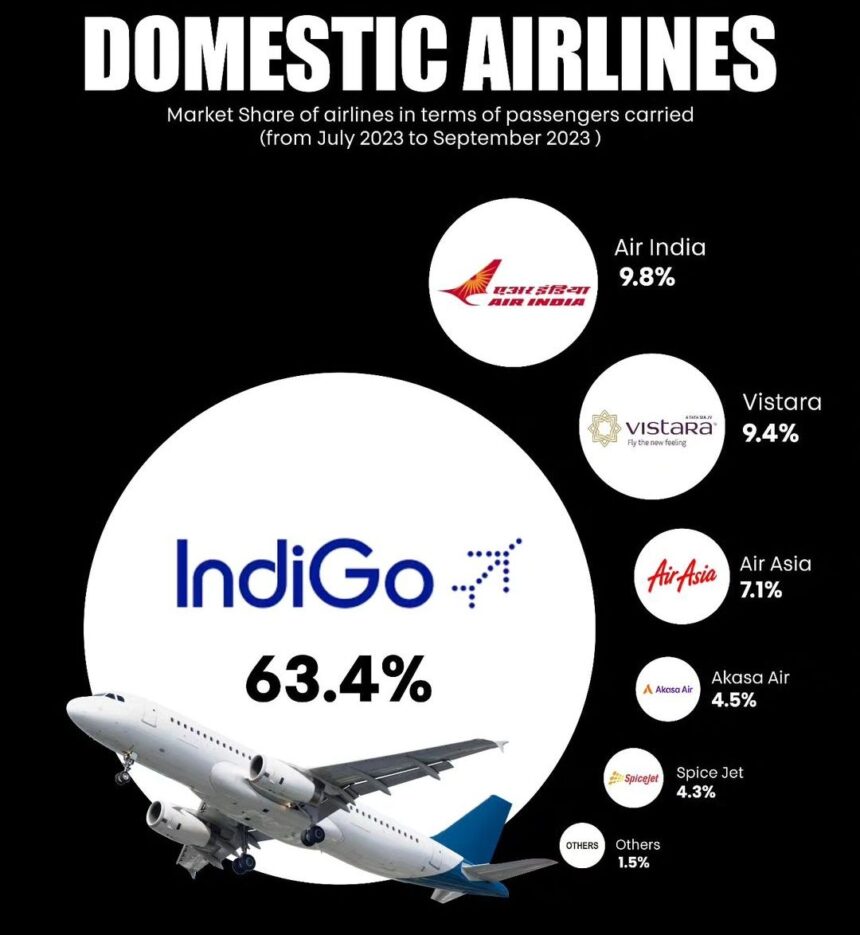10 Powerful Facts About Domestic Airlines in India That Will Surprise You
Domestic airlines in India are more than just a mode of transport; they are the lifeline connecting millions of people, supporting businesses, tourism, education, and healthcare. From the early beginnings of Air India to the rise of low-cost carriers like Indigo and SpiceJet, domestic aviation has grown into a dynamic and influential sector. This guide explores the history, facts, timeline, significance, FAQs, daily life impacts, and societal importance of domestic airlines in India, written in a human-friendly style.
History of Domestic Airlines in India
Early Beginnings (1932–1947):
Tata Airlines, which later became Air India, started operations in 1932.
Initial focus was on mail transport and connecting major cities such as Mumbai and Delhi.
Post-Independence Era (1947–1990):
The Indian government took over Air India in 1953.
Domestic aviation expanded slowly, connecting regional centers and facilitating trade and governance.
Liberalization Era (1991–2000):
Government liberalization allowed private players such as Jet Airways, Sahara Airlines, and East-West Airlines.
Competition improved service quality, safety standards, and ticket affordability.
Modern Era (2000–Present):
Low-cost carriers (LCCs) like Indigo, SpiceJet, GoAir, and AirAsia India transformed the sector.
Focus shifted to regional connectivity, digital booking, mobile apps, and customer experience.
The UDAN (Ude Desh ka Aam Naagrik) scheme promoted air travel to tier-2 and tier-3 cities.
Interesting Facts About Domestic Airlines in India
Passenger Growth: Domestic air traffic has doubled in the last decade, making India the third-largest domestic aviation market in the world.
Major Airlines: Indigo, Air India, SpiceJet, Vistara, and GoAir dominate domestic travel.
Regional Connectivity: UDAN flights have connected over 70 underserved airports across India.
Economic Contribution: Domestic airlines generate employment, boost tourism, and support trade.
Low-Cost Travel: LCCs make air travel accessible to middle-class families and young professionals.
Technological Integration: Airlines leverage AI, apps, smart baggage tracking, and online check-in.
Safety Standards: India’s aviation authority enforces stringent safety regulations aligned with international standards.
Tourism Growth: Domestic flights have enabled short weekend trips and cultural exploration.
Cultural Connectivity: Airlines allow families, friends, and communities across regions to stay connected.
Environmental Initiatives: Modern aircraft are fuel-efficient, and airlines are adopting carbon reduction strategies.
Timeline of Domestic Airlines in India
1932: Tata Airlines launches domestic operations.
1953: Air India is nationalized by the government.
1991: Liberalization allows private airlines to operate.
1993–2000: Jet Airways and Sahara Airlines expand domestic routes.
2005–2015: Low-cost carriers like Indigo, SpiceJet, and GoAir emerge.
2016–Present: UDAN scheme and digital innovations expand connectivity and passenger convenience.
Significance of Domestic Airlines
Economic Growth: Domestic airlines support trade, employment, and business growth.
Time Efficiency: Air travel reduces journey times drastically compared to rail or road.
Regional Development: Connecting smaller cities promotes business, education, and healthcare access.
Global Connectivity: Domestic flights link to international hubs, facilitating overseas travel.
Emergency Support: Airlines provide medical evacuation, disaster relief, and urgent cargo services.
Daily Life Convenience: Business travelers, families, and students benefit from affordable, fast, and reliable travel.
Cultural Exchange: Travel enables language learning, festival participation, and regional exploration.
FAQs About Domestic Airlines in India
Q1: Which is the largest domestic airline in India?
A1: Indigo Airlines is the largest by passenger volume and fleet size.
Q2: How safe is domestic air travel in India?
A2: India’s domestic aviation is highly regulated and considered very safe.
Q3: Are budget flights reliable?
A3: Yes, low-cost carriers like SpiceJet and GoAir offer reliable travel with modern aircraft and efficient service.
Q4: What documents are needed for domestic flights?
A4: A government-issued ID (Aadhaar, Passport, Voter ID, or Driving License) is mandatory.
Q5: Can domestic airlines carry cargo?
A5: Yes, most airlines provide cargo services for commercial and personal shipments.
Impact on Daily Life
Business Travel: Enables quick meetings, conferences, and networking opportunities.
Tourism: Encourages family vacations, weekend trips, and cultural exploration.
Education: Students travel conveniently to universities and coaching centers across India.
Healthcare Access: Patients and medical supplies reach distant cities faster, improving healthcare outcomes.
Employment: Airlines and airports generate millions of direct and indirect jobs.
Cultural Interaction: Travel fosters interaction among diverse communities, promoting national unity.
Observance and Tips for Travelers
Book in Advance: Secure cheaper fares and preferred seats.
Check Airline Policies: Review baggage allowance, cancellations, and boarding rules.
Use Loyalty Programs: Frequent flyer programs offer discounts, lounge access, and priority services.
Travel Smart: Carry valid ID, tickets, and health documents.
Follow Safety Guidelines: Abide by airport security, COVID protocols, and airline instructions.
Explore Regional Routes: Utilize UDAN flights for smaller towns and tier-2 cities.
Conclusion: Why Domestic Airlines Matter in India
Domestic airlines are a cornerstone of modern India, connecting people, businesses, and cultures. They enhance economic growth, tourism, education, and healthcare, while also fostering social cohesion and cultural exchange.
By making travel efficient, safe, and affordable, domestic airlines transform lifestyles and opportunities. They empower individuals to reach their goals faster, explore diverse regions, and experience the richness of India, while also supporting societal growth and national connectivity.
Quick Recap: 10 Powerful Facts About Domestic Airlines in India
Connect metros and remote cities efficiently.
India is the third-largest domestic aviation market globally.
Major airlines include Indigo, Air India, SpiceJet, and GoAir.
Low-cost carriers make air travel affordable.
Airlines boost tourism, business, and education.
Generate millions of jobs.
Regional connectivity bridges underserved cities.
Modern technology enhances passenger experience.
Airlines support emergency services and medical travel.
Promote cultural exchange and societal unity.








